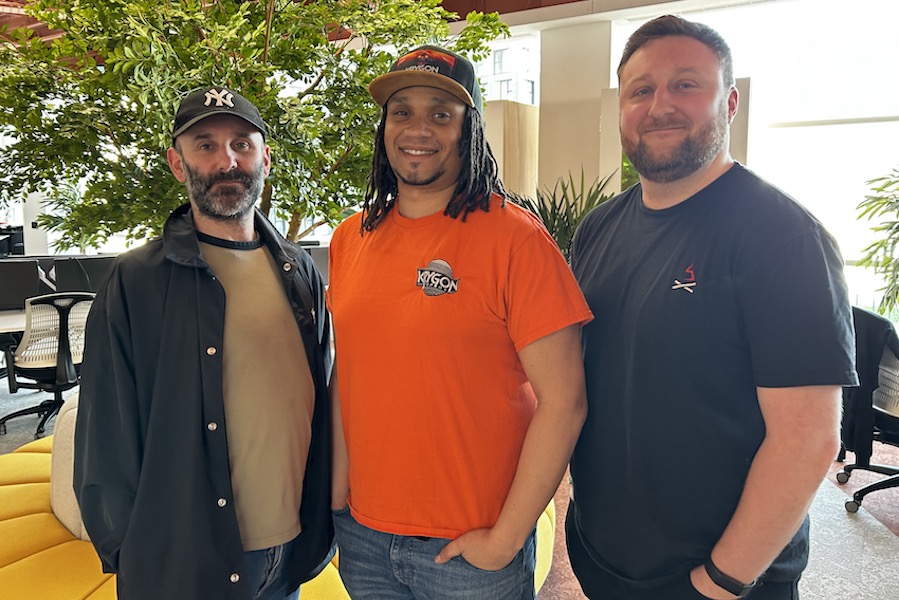The historic pub crawl of the oldest boozers in Manchester
- Written by I Love MCR
- Last updated 1 year ago
- Cornerstone, Featured, Food & Drink, History
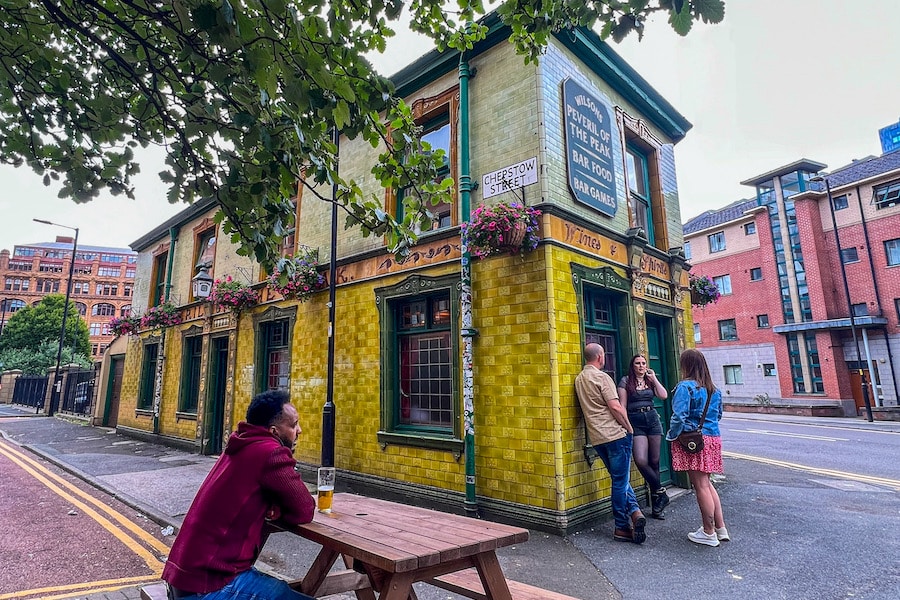
The great British pub is a long-serving icon the country’s history and culture.
Manchester has a long and rich history, brimming with culture and moments that have changed the course of time.
The city is going through constant change, but in the midst of change and often unnecessary reconstruction, pubs are a link between present and past, often reaching back a hundred, even two hundred years or more. Many are architectural gems, all are centres of conviviality and storehouses of mostly happy memories. And of course, you can get a drink and maybe a bite to eat.
This city was a hub for trade during the Industrial Revolution and many pubs opened between 1700 and 1900 as watering holes for the growing population of Manchester Worker Bees with their increasing disposable income.
They are a link with the past, a focus of memories – both personal memories and the collective memories of the city. When they’re gone, we miss them.
Step back in time and discover the historic charm of Manchester’s Grade II listed pubs and the social history of the communities they served.
A walking trail of eight of the oldest pubs in Manchester city centre
Starting at The Britons Protection, this map will take you on a tour of, not just the oldest pubs in Manchester but, the oldest pubs in England that still retain their old-school charm. With opportunities aplenty for sampling and critiquing beer and real ale along the way of course. Cheers to Manchester!
The route:
1. The Britons Protection
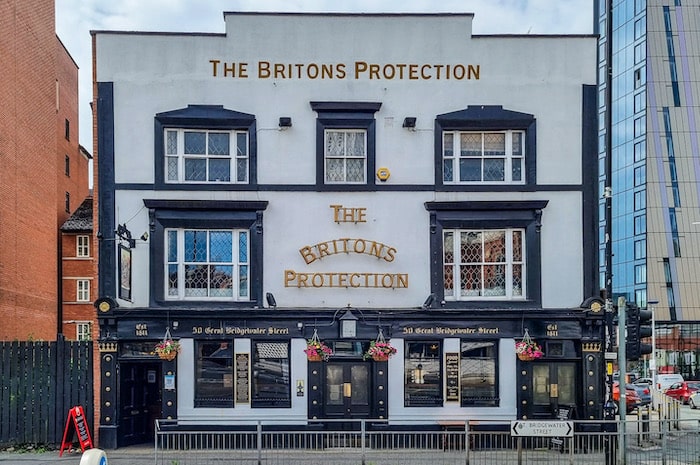
Let the games begin. The Britons Protection, dating from the early 19th century, is a time capsule. While practically everything else around it has changed, The Britons Protection has remained defiant. True to its name, it has stood its ground, despite being under threat. Small on the outside, it’s surprisingly spacious on the inside. There are homely rooms with real fires and many attractive wood fittings. Today it overlooks the Bridgewater Hall, which is built on the site of the old Lower Mosley Street bus station, so it’s likely many people must have enjoyed ‘one for the road’ there.
With a rich history dating back to the early 19th-century, this iconic building has become a must-see landmark for those interested in fascinating architecture and unique interiors. The Britons Protection, as it was first recorded in 1820, is a building with a truly remarkable character. Boasting an interior that dates back to the 1930s, it’s easy to be impressed by the long front bar, which runs parallel to the street frontage. This area features an exquisite lincrusta ceiling, boasting ornate design elements that are sure to leave you in awe.
In addition to the front bar, the building features a corridor that connects to a series of rooms. With beautiful wood panelling, fitted seating, and bell pushes that once summoned service, these rooms offer a glimpse into the past. And with glazed sashes that can still be seen to this day, the building offers a unique insight into the provision of service. If you take the time to explore this historic gem, be sure to look out for the fine tile work and glass that make it truly special.
50 Great Bridgewater Street, M1 5LE
2. Peveril of the Peak

The Peveril of the Peak, about 500 yards from The Briton’s Protection, is one of Manchester’s most celebrated pubs, not least because of its two tone green tiled exterior. Its name was derived from a stage-coach that traversed between London and Manchester during a time when railways were not yet widespread. The edifice underwent renovation around 1900, leading to the current magnificent splendour of the glazed tile exterior of ‘The Pev’. An architectural gem.
It’s the only ‘detached’ pub in Manchester city centre. You can walk right around it. It dates from the early 19th century and is said to be named after a stagecoach that used to run from Manchester across the Pennines. It’s an architectural gem. Outside there are those wonderful tiles and ornamental details. Inside there are original wooden benches, stained glass, etched mirrors and bells. The Pev was once under threat of demolition by a planned change in the road layout. A campaign was formed, the road was diverted and the pub was saved.
127 Chepstow Street, M1 5JQ
3. Circus Tavern
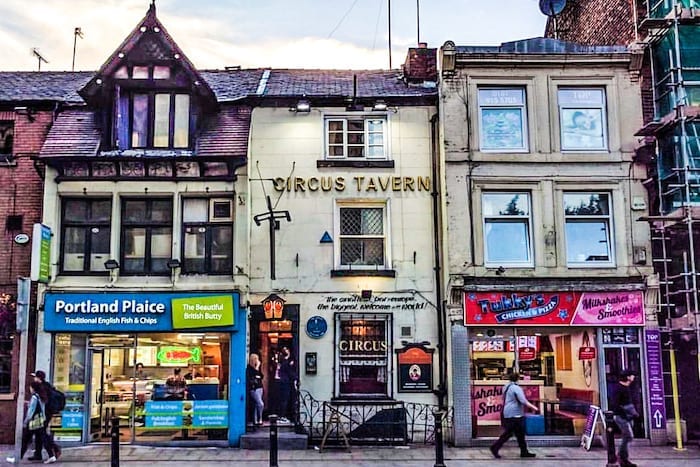
You are fortunate enough to have come across a truly exceptional sight. This particular location represents a very rare example of a small and unassuming beer house from the 19th century. This place can be found right in the heart of the bustling city and it is a true testament to the past. The structure itself was originally adapted from a late 18th-century building that was likely used as a combined dwelling and workshop for a weaver. It has remained largely unchanged since being first transformed circa 1870-1880, being only one plot width in size, with one narrow corridor on the left and two small rooms to the right, each containing plain wooden seats and wooden partitions. Take note that the bar counter itself is a more recent addition, having only been installed during the 1930s.
86 Portland Street, M1 4GX
4. Mr Thomas’s Chop House
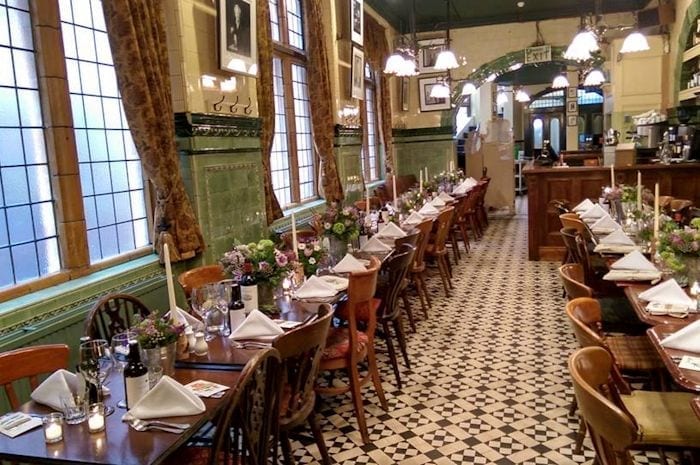
Mr Thomas’s Chop House has served the heart of Manchester with the very best of British food and drink for over 150 years. Though the owners are no longer the Studds, this famous pub still an independently run family business.
This Manchester institution, founded in 1867 by Thomas Studd, announces itself on Cross Street with an exuberantly decorated façade in buff-coloured terracotta and red brick. It is so narrow that it looks as though it has been squashed in between its more sober neighbours. The building dates from 1901: the front part, now the bar, was originally a shop, but beyond it is the original chop house dining room, a long and narrow space lined with green and cream tiles.
It has an authentic turn-of-the-century atmosphere – fortunately it hasn’t been poshed up with white tablecloths or fancy props and the service is friendly and informal.
Looking for a bite along the way? Tom’s Chop House specialises in traditional hearty fare – steaks, chops, burgers and pies – but this is no ordinary pub grub.
52 Cross St, Manchester M2 7AR
5. The Old Wellington Inn
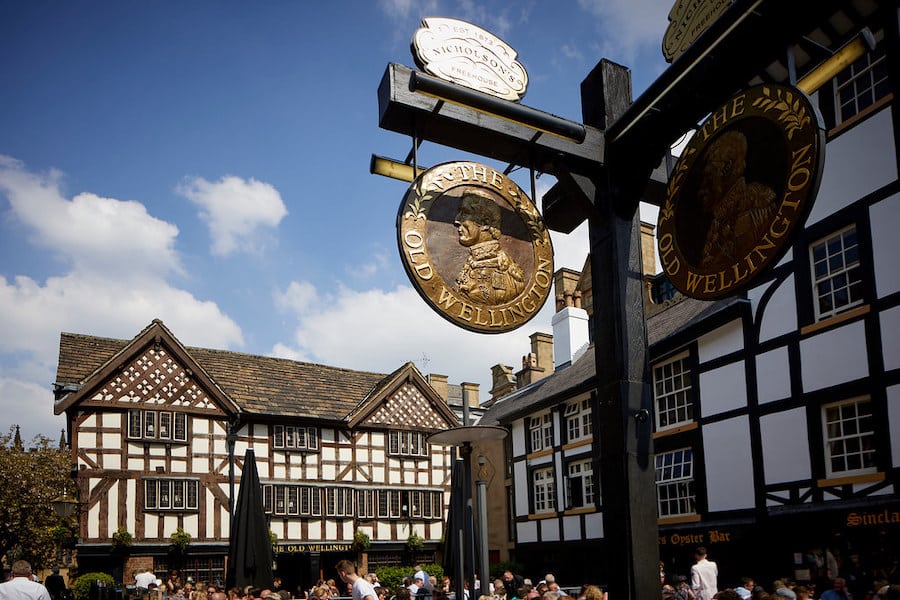
The Old Wellington, located in the bustling city of Manchester, stands as a testament to the city’s rich history. Built in 1552, it is the oldest building in the city and has played a vital role in shaping Manchester’s commerce. Once home to some of the city’s most prominent founders, the first bank, and the burgeoning cotton industry, it has witnessed firsthand the rise of Manchester as a commercial powerhouse.
Spanning centuries, the Old Wellington has stood the test of time, and its walls are imbued with memories- from its initial location next to the Market Square to the addition of a third storey in the 17th century. In 1830, the building was licensed as a public house, becoming a hub of activity in the city center.
Over the years, Manchester has undergone various redevelopment programs, and during one such instance in 1998, the Old Wellington was moved about 100m away from its original site. Nevertheless, it remains a symbol of Manchester’s rich heritage, and a must-visit destination for anyone hoping to experience the city’s vibrant history.
6. Castle Hotel
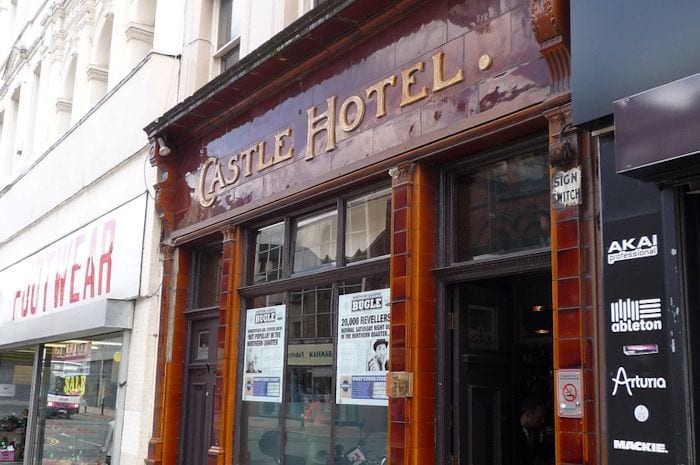
This stunning building dates back to the early 19th-century and has been through a number of transformations over the years. One of the most noteworthy conversions occurred in 1904 when the site was purchased by Kay’s Atlas Brewery, who were responsible for much of the exterior’s eye-catching glazed tile work.
Despite being opened up a little over time, the building still boasts some elegant original features, including a couple of sizeable rooms and some extraordinary tiling. In particular, the tiled bar front is nothing short of spectacular and is considered a rare survivor from the time.
Other significant features include the mosaic floors in the former entrance lobbies, the lincrusta ceiling, and the mirrored bar back in the front (public) bar. Meanwhile, the fitted bench seating in the Saloon Bar provides ample comfort for visitors looking to relax and enjoy a drink surrounded by this incredibly rich and unique historical backdrop.
66 Oldham Street, M4 1LE
7. Crown and Kettle
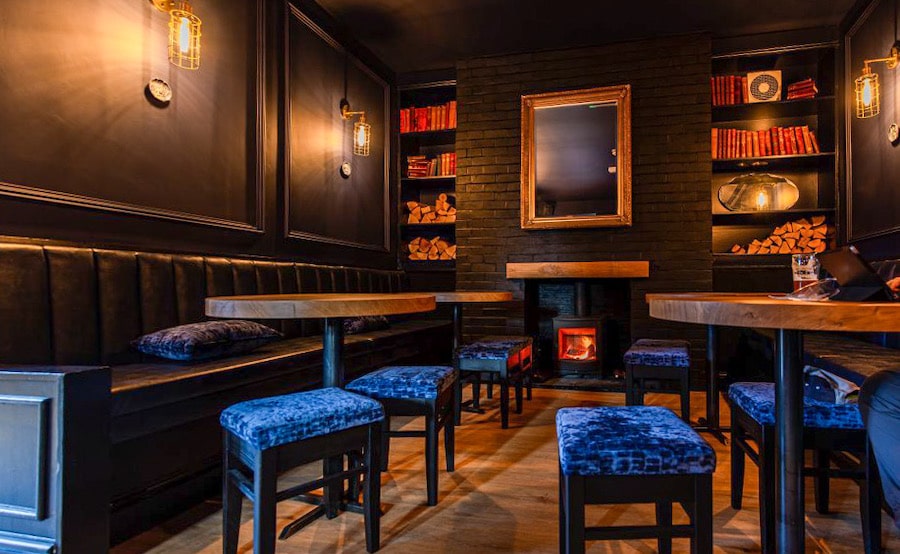
Located in the heart of the city lies an awe-inspiring 19th-century building adorned with intricate Gothic detailing. This striking building has often been associated with a court-house, supposedly connected to the neighbouring markets. However, it is highly likely that this is a mere urban legend, as the ornate Gothic style was typically reserved for religious and educational establishments, rather than pubs.
After being closed for more than a decade, this architectural masterpiece was finally reopened to the public in 2005 and was since refurbished in 2020. Its immaculate interior boasts of a grand plaster ceiling adorned with colossal pendants, formerly supporting lamps, while its wooden panelling was said to have been salvaged from the airship, R100. Regrettably, the paneling did not survive a fire that broke out soon after closure. Nevertheless, one can still admire the astounding ceiling in one of the bars, meticulously restored to its former glory, while in another bar, it remains untouched, allowing visitors to appreciate its authentic and rustic appeal.
2 Oldham Road, M4 5FE (corner of Great Ancoats Street)
8. Marble Arch Inn
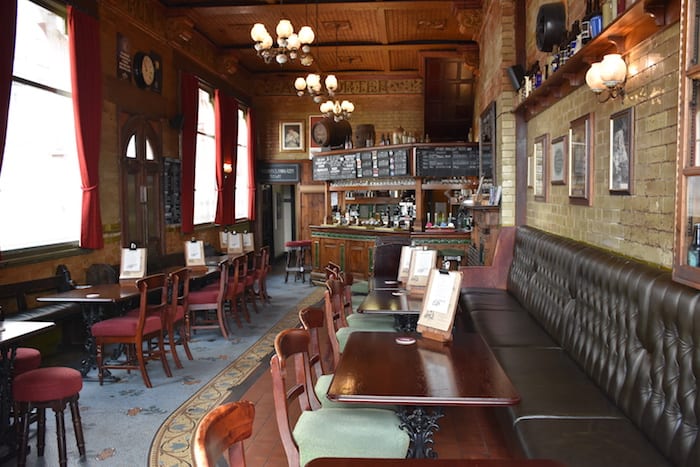
The charming and historic pub we’re discussing was constructed in 1888 by the esteemed McKenna’s Brewery of Harpurhey, as is made apparent by the date prominently displayed on the gable of the structure. The brewery spared no expense in crafting a pub that would stand out, with the ground floor exterior completed in sleek, polished pink granite and brickwork above. Despite the pub’s impressive exterior, its most significant feature can be found within its four walls, in the form of exquisite interior tilework. A tile frieze adorns the walls, listing an extensive array of beverages available for patrons to enjoy. Legend has it that a former landlord would challenge customers to try and finish the extensive list of drinks, with the bet resulting in the customer’s failure and the landlord’s triumph.
Unfortunately, the interior has been redesigned and the long counter and multiple rooms have been removed, but visitors can still spot a “ghost” pattern in the floor tiles. If visitors feel a bit unsteady, they might attribute it to having one too many drinks, but in reality, the steep slope of the floor from the Rochdale Road end is the culprit. Additionally, the exterior doors halfway down the outside wall are permanently locked, serving as a marker for where the former bar once stood, divided by an entrance lobby.
73 Rochdale Road, M4 4HY
A map of Manchester’s historic pub walk
- This article was last updated 1 year ago.
- It was first published on 4 May 2023 and is subject to be updated from time to time. Please refresh or return to see the latest version.
Did we miss something? Let us know: press@ilovemanchester.com
Want to be the first to receive all the latest news stories, what’s on and events from the heart of Manchester? Sign up here.
Manchester is a successful city, but many people suffer. I Love Manchester helps raise awareness and funds to help improve the lives and prospects of people across Greater Manchester – and we can’t do it without your help. So please support us with what you can so we can continue to spread the love. Thank you in advance!
An email you’ll love. Subscribe to our newsletter to get the latest news stories delivered direct to your inbox.
Got a story worth sharing?
What’s the story? We are all ears when it comes to positive news and inspiring stories. You can send story ideas to press@ilovemanchester.com
While we can’t guarantee to publish everything, we will always consider any enquiry or idea that promotes:
- Independent new openings
- Human interest
- Not-for-profit organisations
- Community Interest Companies (CiCs) and projects
- Charities and charitable initiatives
- Affordability and offers saving people over 20%
For anything else, don’t hesitate to get in touch with us about advertorials (from £350+VAT) and advertising opportunities: advertise@ilovemanchester.com

Manchester BMX club puts the wheels in motion to help a local hero
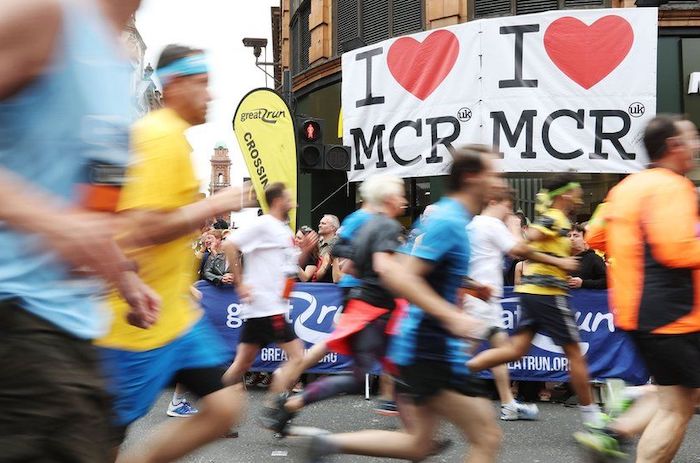
Celebrating the amazing people taking on Great Manchester Run in 2025

Frankie Lipman steps into Lady Macbeth’s shoes in gutsy new take on Shakespeare
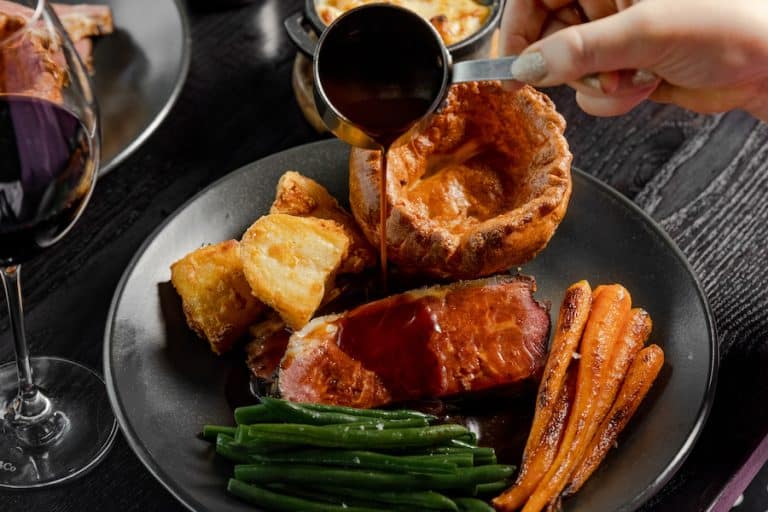
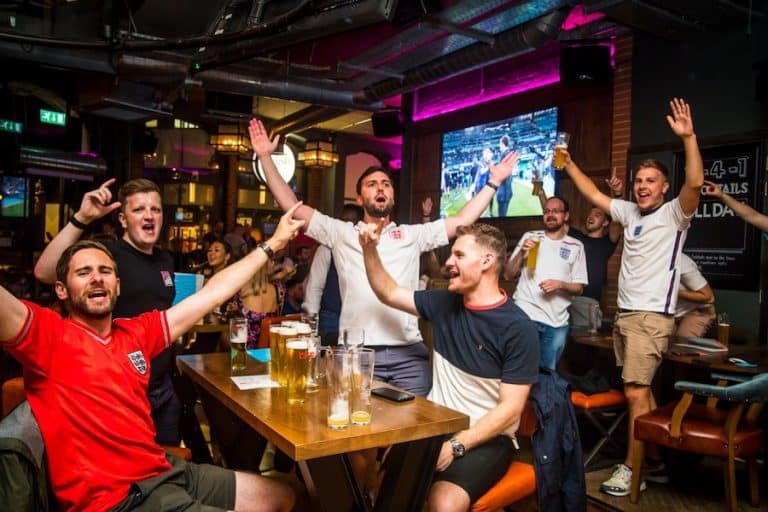
Best bars and pubs to watch the football and live sport in Manchester














